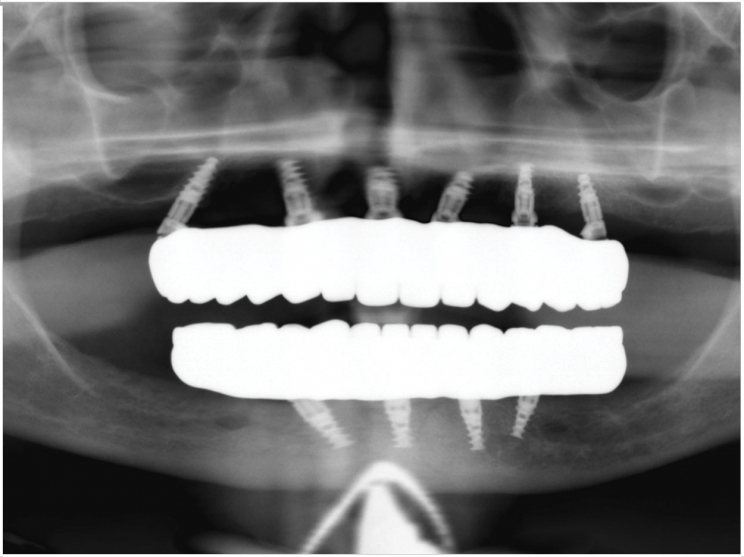
The American Academy of Implant Dentistry (AAID) reports that 15 million Americans have crown or bridge replacements, while 3 million have dental implants—and the number of those with implants is rising by 500,000 a year. Plus, the American and European markets for dental implants will rise to $4.2 billion by 2022. Yet, the AAID cautions, a 2005 study indicated that 5% to 10% of all dental implants fail. A new nanocoating developed by a pair of schools in the United Kingdom, however, aims to improve the success rate.
Failures are caused by mechanical problems, a poor connection to the bones where the implant is located, rejection, or infection. The primary cause of failure, though, is peri-implantitis as pathogenic microbes in the oral cavity develop into biofilms on implants. The destructive inflammatory process that results affects the soft and hard tissues surrounding the implant, and as failure occurs, the implant must be removed.
Scientists from the School of Biological Sciences at the Plymouth University Peninsula Schools of Medicine and Dentistry and the School of Engineering at Plymouth University have developed an approach using a combination of silver, titanium, and hydroxyapatite nanocoatings that, when applied to the surface of titanium alloy implants, inhibits bacterial growth and reduces the formation of bacterial biofilm on the implants’ surface by 97.5%. It also supports successful integration into surrounding bone and accelerated bone healing.
“In this cross-faculty study, we have identified the means to protect dental implants against the most common cause of their failure,” said Christopher Tredwin, BDS, MSc, PhD, head of the Plymouth University School of Dentistry. “The potential of our work for increased patient comfort and satisfaction and reduced costs is great, and we look forward to translating our findings into clinical practice.”
“As yet there are no nanospecific guidelines in dental or medical implant legislation, and we are, with colleagues elsewhere, guiding the way in this area. The European Union recognizes that medical devices and implants must perform as expected for their intended use and be better than similar items in the market, be safe for the intended use or safer than an existing item, and be biocompatible or have negligible toxicity,” said Richard Hardy, PhD, leader of nanoscience activity at the University of Plymouth. “Our work has been about proving these criteria, which we have done in vitro. The next step would be to demonstrate the effectiveness of our discovery, perhaps with animal models and then human volunteers.”
“Current strategies to render the surface of dental implants with antibacterial with the aim to prevent infection and peri-implantitis development include application of antimicrobial coatings loaded with antibiotics or chlorhexidine. However, such approaches are usually effective only in the short term, and the use of chlorhexidine has also been reported to be toxic to human cells,” said Alexandros Besinis, MSc, PhD, lecturer in mechanical engineering at the University of Plymouth. “The significance of our new study is that we have successfully applied a dual-layer silver-hydroxyapatite nanocaoting to titanium alloy medical implants, which helps to overcome these risks.”
The study, “Antibacterial Activity and Biofilm Inhibition by Surface Modified Titanium Alloy Medical Implants Following Application of Silver, Titanium Dioxide, and Hydroxyapatite Coatings,” was published by Nanotoxicology.
Related Articles
Implant Coating Repels Bacteria and Facilitates Osseointegration
Implant Fights Infections With Reservoir Full of Antimicrobials
Hydroxyapatite Coating Improves Implant Performance


